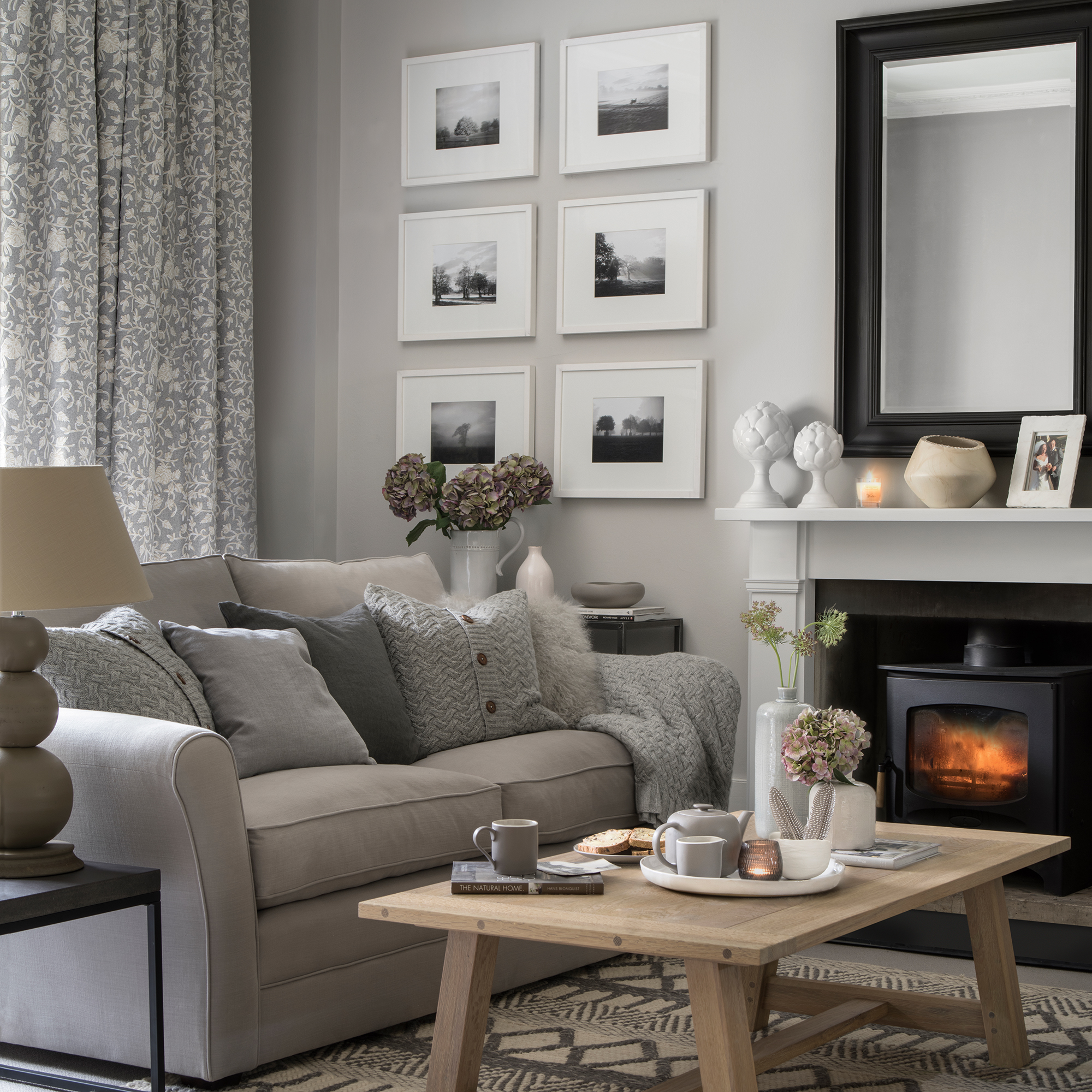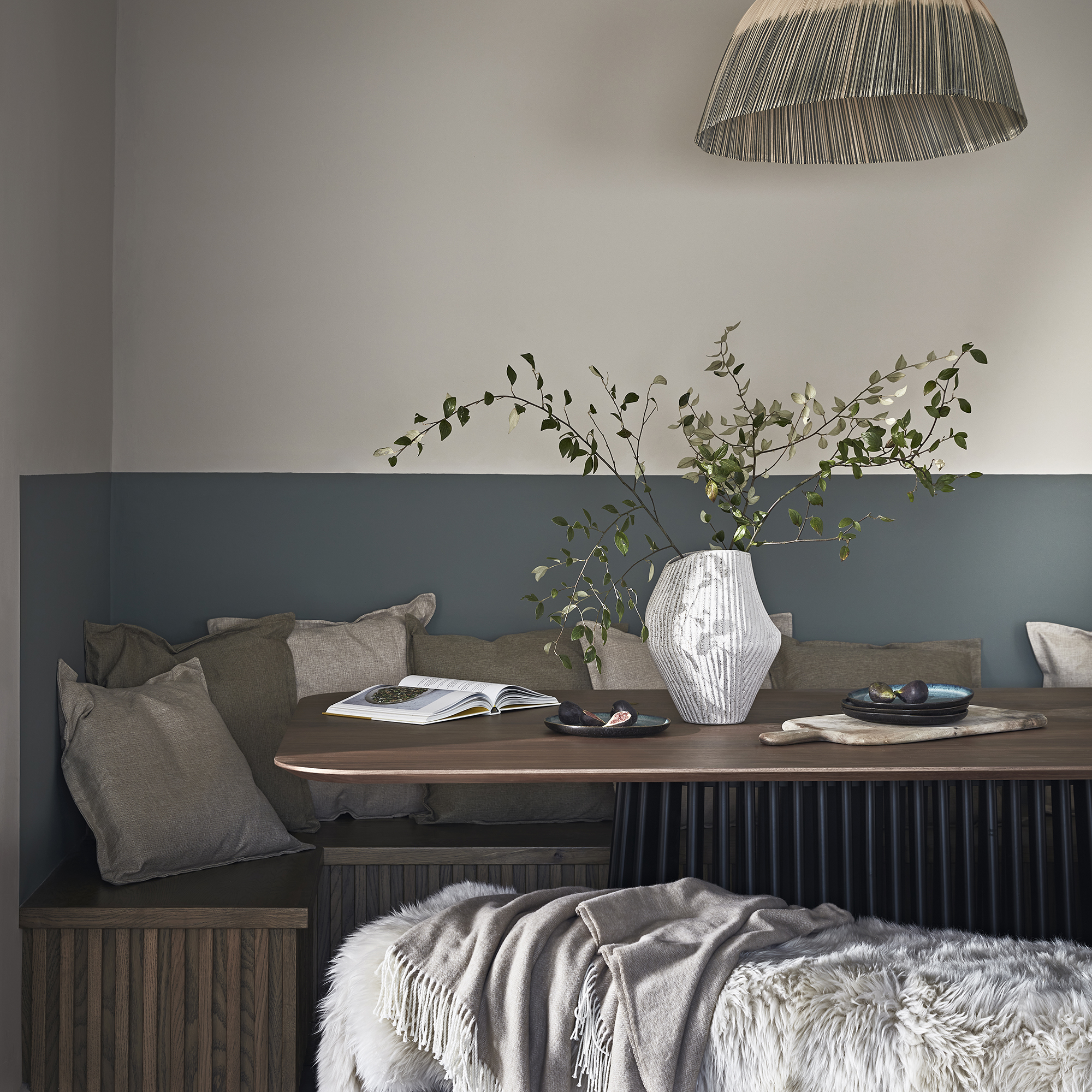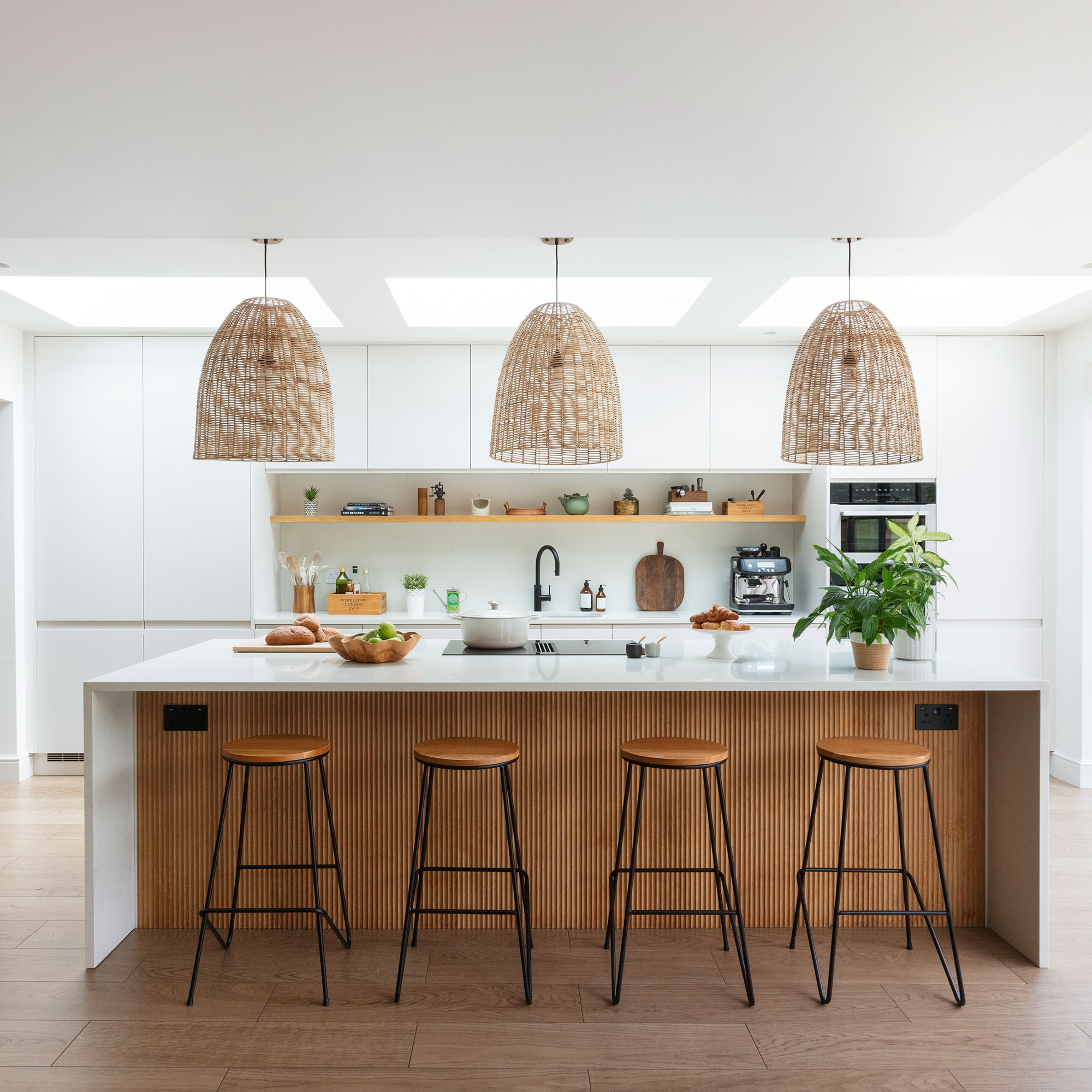Colour experts reveal these are the depressing shades to avoid when decorating your home
Are these shades ruining your mood?



Choosing colours for your home is one of the biggest joys in life, so knowing the depressing paint colours to avoid is just as important as learning what the best colour combinations are.
What to avoid? ‘This will be unique to everyone,’ says Karen Haller, a behavioural design consultant, colour specialist and author of bestseller The Little Book of Colour. ‘It could be a colour that triggers a bad memory, it could have a negative meaning within your culture or society or how it makes you feel.’
We can even react differently to different shades of the same colour: ‘I connect with a clear, warm sky blue,’ says Karen, ‘but a cool, greyed-out powder blue leaves me feeling cold and miserable. When it comes to colour psychology, the colour that can fuel low mood or even create a depressive atmosphere is one that you don’t personally resonate with,’ explains Karen. ‘For example, watermelon red really resonates with me, but put me near the fire-engine red and I quickly feel overwhelmed. Find the right tint, tone or shade that you connect with.’
Karen also advises using bold colours in moderation, even if you love them: ‘Use a little of your favourite yellow and you’ll feel happy, like the sun is shining on you. Use a lot and you could feel irritated and start to feel depressed.’
Depressing colours to avoid
Angela Wright, a colour psychologist who devised a system for choosing colour based on years of lab research into our associations between colour and emotions (Colour Affects), thinks that the effect of colours depends on how you combine them.
‘One colour alone is unlikely to elicit an emotional reaction but beautifully harmonised palettes will always elicit a positive response. The individual colours do have universal emotional qualities, but it is only when they are combined with other colours that the positive effects will manifest.’
Whatever the answer, the experts have agreed that these are the depressing colours to avoid when decorating a home.
Get the Ideal Home Newsletter
Sign up to our newsletter for style and decor inspiration, house makeovers, project advice and more.
1. Black

A 2020 study by a team of experimental psychologists, Feeling Blue or Seeing Red?, (Domicele Jonauskaite et al) asked test subjects to identify the emotions they linked with colour swatches. Black was associated with a whole spectrum of negative emotions, including hate, sadness, guilt, regret, disappointment, fear and contempt. Don’t rule it out as a colour for your walls, though – Ideal Home's Editor Heather Young loves it in her black living room makeover.
Justyna Korczynska, senior designer at Crown Paints says, ‘A monochrome scheme incorporating black shades can actually be restful and relaxing. Use one as a feature wall alongside a pale neutral, incorporating natural textures such as rattan to add some depth to your scheme.’
2. Grey

In the Feeling Blue or Seeing Red? study, grey – like black – was exclusively associated with negative emotion. Sixty-one percent of participants linked it to sadness. ‘Too much grey can be depressing,’ confirms Angela Wright. ‘The virtual absence of colour is depressing and when the world turns grey we are instinctively conditioned to draw in and prepare for hibernation. Unless the precise tone is right, grey has a dampening effect on other colours used with it. Heavy use of grey usually indicates a lack of confidence and fear of exposure.’
On the flipside, there’s a reason why grey has been an interior colour trend for the last decade, with some brilliant grey living room ideas: used right, it’s calm and sophisticated. Ruth Mottershead, creative director at Little Greene, says, ‘Grey has been at the root of historical decoration for centuries and remains a timeless staple that people turn to for its ease of use.’ She advocates choosing warmer (browner) greys to avoid a chilly feel: ‘Earthy, stonier tones provide a more comforting alternative to cooler grey choices. These warmer tones can be used in all areas of the home, adding warmth, relaxation and a sense of cocooning.’ Try grey bedroom looks for a down-time mood.

Ruth explains that the key to making cooler greys work is teaming them with warm, contrasting colours. She suggests a rich yellow like Little Greene’s Mister David or glowing orange Marigold. If this sounds a bit too dramatic for you, try a complementary contrast by offsetting deep charcoal grey with a restful blue-green.
Colour expert Karen Haller points out that grey’s ‘meh’ qualities can actually be put to good use: ‘Grey is a colour that recedes, so it’s ideal for something you don’t want to stand out or be a focal point, like a pillar or column. I have a dark grey pergola on my patio that you don’t notice – it’s hiding in plain sight.’
3. Brown

Fifty percent of participants in the 2020 Feeling Blue…? Study identified the colour brown with feelings of disgust. Not surprising when it’s the colour of poop, or dirty water. It’s also the colour of chocolate – the ultimate comfort food – so there are some positives. Angela Wright explains its split personality, its negatives being, ‘Lack of humour, heaviness and a lack of sophistication.’ On the positive side, she says, ‘Brown has associations with the earth and the natural world. It is a solid, reliable colour and most people find it quietly supportive – more positively than black, which is suppressive, rather than supportive.’
Tap into brown’s smooth and comforting properties and create a modern look by avoiding bold contrasts and teaming it with plaster pink or rich cream tones.
4. Beige

Anyone else have a love/hate relationship with beige? So often the solution to a gloomy room and yet so, well, beige. Farrow & Ball’s colour curator, Joa Studholme, says, ‘Neutrals alone are not a fail-safe combination and it is all too easy to fall into the trap of using bland, depressing colours instead of subtle, complex palettes.’ Her approach is to mix neutrals from light to dark, to create gentle contrasts and definition. Pick from shades on the same paint swatch strips for colours that compliment each other rather than compete and create a beige scheme that’s anything but boring. We're big fans of neutral bedroom ideas for cosy, calm spaces.
Justyna Korczynska recommends adding life to beige with non-neutrals: ‘Paired with complementary shades, blacks, browns and beiges can really bring a room to life. Stereotypically “boring” tones such as beige can add real depth to any room and are so versatile. For example, magnolia can be paired with deep blues or navy for a stylish, modern finish.’
FAQs
What are negative mood colours?
Red is associated with negative feelings including anger, hatred and aggression. It can also be overstimulating if used immersively, leaving you feeling tired and drained. Blues are often linked to sadness – hence the saying ‘feeling blue’, although they can feel very calm, too. Black is linked to death, danger and depression – even though it is also used as an indicator of quality and good taste when used in moderation (think Jo Malone’s packaging or black skirting boards).
What colours symbolise anxiety?
It depends on you and your life experiences. Any colour can be triggering if it has negative associations for you. In general, red, yellow and black are all colours that can feel overwhelming if used excessively in a decorating scheme, especially if they are paired. Angela Wright advises, ‘To avoid fuelling anxiety avoid black and warm yellow – nature’s danger signal.’

Vanessa Richmond has been a freelance writer, editor and editorial consultant since 2021. Her career in magazines began in 1998 and, apart from a four-year stint at women’s lifestyle magazine Red, it has been spent working on interiors titles including House Beautiful, Country Homes & Interiors and Style at Home. She is a former editor of Ideal Home, Country Homes & Interiors and Style at Home magazines. She has also worked for House Beautiful and Red. During her 25 years as a journalist, she has been a sub-editor, columnist, deputy editor and editor. Now she combines freelance writing with being a secondary-school English teacher.
-
 Will a conservatory add value to your home and how can you maximise it?
Will a conservatory add value to your home and how can you maximise it?This is what the pros say
By Amy Reeves
-
 I’ve been looking for a new signature scent for my home and The White Company's new fragrance is the exact summer holiday smell I needed
I’ve been looking for a new signature scent for my home and The White Company's new fragrance is the exact summer holiday smell I neededSantorini smells fresh, summery and sophisticated
By Kezia Reynolds
-
 How to remove algae from garden walls in five steps – and the cleaning product experts rave about for tackling it fast
How to remove algae from garden walls in five steps – and the cleaning product experts rave about for tackling it fastExperts share their top tips for getting garden walls algae-free
By Katie Sims
-
 Hygge living room ideas — 6 ways to warm up your home with this Danish concept and cosy aesthetic
Hygge living room ideas — 6 ways to warm up your home with this Danish concept and cosy aestheticHunker down until summer finally arrives with these warming ideas
By Rebecca Knight
-

 How to create a sensory home – interiors experts reveal 5 easy ways to style your home and soothe your mind
How to create a sensory home – interiors experts reveal 5 easy ways to style your home and soothe your mindYou can turn any space into a sanctuary by following these simple steps
By Maddie Balcombe
-

 Can displaying family photos at home make you happier? According to research it can — 5 ways to do it in style
Can displaying family photos at home make you happier? According to research it can — 5 ways to do it in styleHarness the mood-boosting power of looking through old photos by displaying your favourites
By Rebecca Knight
-
 How to make a hallway smell incredible without candles - 7 ways to gently fragrance your entranceway
How to make a hallway smell incredible without candles - 7 ways to gently fragrance your entrancewayGo flame-free to safely scent your entryway
By Vanessa Richmond
-
 6 ways I brighten my home in January when the Christmas decorations come down, as an interior stylist
6 ways I brighten my home in January when the Christmas decorations come down, as an interior stylistHelp banish the winter gloom with these uplifting ideas
By Laurie Davidson
-
 Kitchen hacks to encourage healthy eating habits — 7 ways your kitchen can support healthy living
Kitchen hacks to encourage healthy eating habits — 7 ways your kitchen can support healthy livingMake creating healthy changes easy by following these tips
By Eilidh Williams
-
 How to reset your home after Christmas to restore a sense of calm
How to reset your home after Christmas to restore a sense of calmFollow these 7 steps to get back to normal at home and beat post-Christmas blues
By Eilidh Williams
-
 How to make a house look more inviting - 8 ways to quickly boost your house’s appeal in time for Christmas
How to make a house look more inviting - 8 ways to quickly boost your house’s appeal in time for ChristmasMake visitors feel welcome from the second they step foot on your property
By Vanessa Richmond